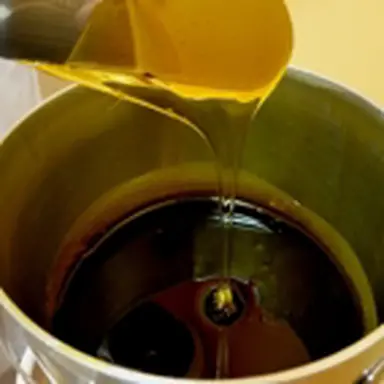
Hairs die hard. There are plenty of techniques to finally get rid of hairs, but not all of them are adapted to every body part. What type of hair removal for what area? What technique? With or without cosmetics? You will find everything you need to know below.
Hair removal has become automatic. It is now part of many men and women’s daily lives. And yet, this routine gesture is not insignificant. If it is not done properly or with not clean enough material, it can have real implications on the body (wounds, infections, ingrown hair…). That is why you need to remain vigilant.
Shaving
Quick, efficient, and painless… shaving is chosen by 58% of women. This method suits all body parts. And it is better if the skin is exfoliated before the operation, because it reduces the risk of getting ingrown hairs. Shaving should be carried out on wet skin to make the hairs suppler, make it easier to use the razor, and limit any risk of cutting your skin. It may be useful to apply shaving or shower foam to make the blade feel softer on your skin.
Also, change blades after two or three sessions, otherwise they gradually blunt and become potentially hazardous. They get less sharp, grab on to the hairs, and slide less easily on the skin – which means you may get injured.
A new trend has recently emerged: face shaving for women. Many YouTubers and bloggers have tested it and tell how this method helped them get rid of their unsightly face hairs. And if a few specialists have been warning about the adverse effects (drier, more reactive skin, worsening of certain skin pathologies), others consider face shaving for women does not stimulate hair growth.
If you are tempted by the experience, same tips: the gesture should be done on wet, soaped skin, with a small, accurate razor.
Depilatory cream
Depilatory creams often have bad press, because they dissolve the hairs with a chemical reaction. Why is that so? Because of their strong, unpleasant smell and very aggressive nature for the skin, in particular! Based on sulphur derivatives – thioglycolic acid – depilatory creams act on keratin, our hair envelope.
Apply thick layers of depilatory cream on dry skin, on the area to be treated. Leave it exactly the time recommended on the packaging: it is no use leaving the product on longer than instructed. On the contrary, prolonged application may burn the skin.
Depilatory cream is easy-to-use, but a little abrasive: avoid sensitive areas like the armpits and bikini line.
It should be said that this cosmetic product does not destroy hair bulbs, so you hairs can regrow quite fast.
Wax
Although it used to be reserved for beauticians, wax has become more democratic: it can now be used at home and does provide professional results.
The method is simple: just stick the hairs and wax together, and remove both at the same time. The process suits all body parts.
For beginners, it is recommended to use cold wax. It is pre-applied on strips, so there is no risk for you to put too much or too little. First, rub the strips between your dry hands to warm the wax up, and apply them on the area wanted. There is no need to leave them on. Always remove them in the opposite direction of hair growth. Cold wax is perfect for long hairs (legs, armpits).
As for warm wax, it requires a little more experience and skill. First, control the wax temperature, otherwise you might get burnt. For optimum hair removal, wait for the wax to get solid and remove it sharply and frankly, all at once. Try not to do it several times on the same area. Warm wax has the nice advantage of eradicating the tiniest, thinnest hairs.
When you are done, apply a bit of oil to soothe the areas where the hairs were removed and get rid of wax residues.
This method is not recommended if you cannot stand pain, because it is painful to tear out hairs – at least the first times!
Thread
Thread hair removal is an ancestral technique used in Iran or India, and which consists in getting the hairs trapped between two twisted threads. Thanks to the alternate hand movement, the hair is torn out at the root. It is a clean and accurate technique. The only huge reservation is that not everyone can do it: it is rather complex to take in. Still, it is getting more and more widely used in France, and many beauty salons provide this service. In addition, it is usually quite cheap (count €7 on average for both brows).
If thread hair removal provides perfect results, it is quite painful too (every hair is torn out one by one), and the area treated usually reddens and looks bared the first minutes following the treatment. If this happens, do not hesitate to apply a bit of cream to soothe the irritation.
Although the concept makes it possible to use the thread technique over the whole body, it is better to reserve it for small areas where hairs are not too long.
The war on hairs has been raging for long, and we tend to do our utmost to eradicate them at all costs. Whether it has to do with aestheticism or fashion, if hairs have a bad reputation, we should all keep in mind that they are not dirty or useless, quite the contrary: among others, they help regulate the body temperature and protect genitals against rubbing and infections.
JS













